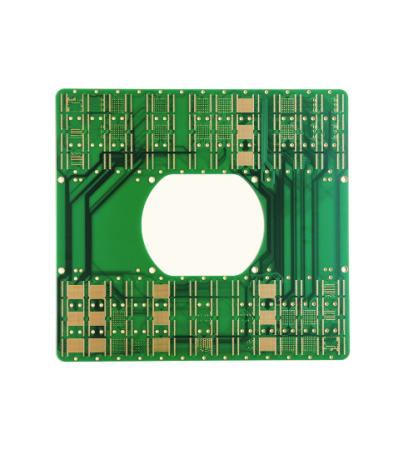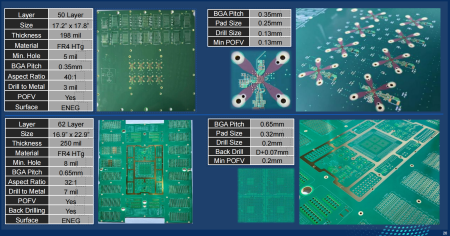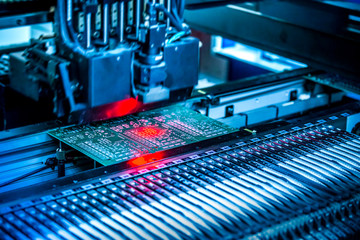- +86-755-23012705
- Building 3, Jinfeng Industrial Park, Fuyong Street, Baoan District, Shenzhen ,China
- [email protected]
The advent of 5G technology has triggered a paradigm shift in the world of telecommunications, ushering in faster internet speeds, lower latency, and more connected devices than ever before. As industries adopt 5G, the demands on electronic components are becoming more complex, especially in the design and manufacturing of Printed Circuit Board Assemblies (PCBA). The PCBA is the backbone of nearly all electronic devices, from smartphones and wearables to industrial systems and medical devices. With 5G poised to revolutionize industries, it brings with it several unique challenges for PCBA designers and manufacturers.
One of the most significant challenges brought about by 5G is the increase in frequency bands. 5G networks utilize higher frequency bands (millimeter waves, ranging from 24 GHz to 100 GHz) to provide faster speeds and greater bandwidth. These frequencies, however, are much more susceptible to signal degradation, interference, and attenuation compared to traditional frequencies used in 4G and earlier generations.
For PCBA design, this means that components must be optimized for higher-frequency performance. Designers must pay close attention to trace impedance, minimize signal loss, and ensure the integrity of high-speed signals as they travel across the PCB. This can involve advanced techniques such as controlled impedance routing, better grounding, and shielding methods to prevent signal degradation.
5G technology demands a high level of miniaturization and compactness in devices. With more advanced features packed into smaller footprints, the size of PCBs and the components mounted on them is becoming smaller and more complex. Mobile devices, for instance, require highly compact PCBs that must accommodate many more components than their 4G predecessors. This often results in increased design complexity, requiring smaller vias, finer traces, and even smaller component packages.
The high-density designs can also lead to thermal management challenges. The more components packed into a PCB, the greater the potential for heat buildup, especially when devices handle the large data loads associated with 5G. Effective thermal management solutions, such as heat sinks, thermal vias, and advanced PCB materials, become crucial in ensuring the reliability and longevity of the device.

The increased performance and data throughput of 5G technology mean that power consumption is also higher, particularly for devices that need to handle intensive applications such as real-time video streaming, augmented reality, and IoT (Internet of Things) devices. As the demand for high-performance computing grows, ensuring that PCBs are energy-efficient and capable of managing high power loads becomes a critical concern.
In PCBA design, managing power delivery to components becomes more challenging with the rise of 5G technology. The need for stable power supplies with high efficiency, low noise, and the ability to handle fast power transients is becoming increasingly important. Designers often turn to advanced power management ICs (PMICs), multi-layer PCBs, and careful routing of power and ground planes to minimize power losses and prevent thermal issues.
With the higher frequencies and miniaturized designs required by 5G, the materials used in PCB construction must also evolve. Standard PCB materials like FR4, which work well for lower frequencies, are often insufficient for high-frequency 5G applications due to issues like signal loss and poor performance at higher frequencies.
To address this, designers are increasingly turning to advanced materials such as low-loss substrates (e.g., PTFE, Rogers, or ceramic-filled materials) that offer better performance at higher frequencies. These materials help reduce signal loss, maintain signal integrity, and ensure the reliability of the PCB in the harsh environment of high-frequency 5G operation. Choosing the right material is crucial for achieving optimal performance, but it often comes at a higher cost.
The transition to 5G will result in more complex and power-hungry devices that require more efficient thermal management. The miniaturization of devices, combined with the higher speeds and increased data transmission rates, generates more heat. Excessive heat can degrade the performance of components, reduce their lifespan, and cause system failures.
Thermal management in PCBA design involves using heat sinks, thermal vias, and heat spreaders to direct heat away from sensitive components. Designers must also account for the thermal coefficients of the materials used in the PCB, ensuring that the thermal expansion of different layers doesn’t lead to mechanical stress or potential failure.

As 5G technology becomes ubiquitous in critical applications such as healthcare, transportation, and manufacturing, the reliability of the devices that rely on it becomes paramount. This makes testing and quality control in PCBA design even more critical. Ensuring that each PCB assembly meets stringent quality standards requires extensive testing, including high-frequency signal testing, thermal cycling, and stress testing to ensure the components can withstand harsh environments and high data loads.
Advanced simulation tools, such as electromagnetic (EM) simulation software, can help designers predict and mitigate potential issues early in the design phase. Post-manufacturing testing such as automated optical inspection (AOI), X-ray inspection, and in-circuit testing (ICT) ensure that the final product meets the desired performance specifications and reliability standards.
The complexity of 5G devices also impacts the manufacturing process. Components that support 5G features, such as advanced RF (Radio Frequency) components, high-frequency connectors, and specialized ICs, are often more expensive and may be subject to supply chain limitations. Manufacturers must carefully plan their procurement processes, managing component availability and ensuring that the assembly line can handle the increased complexity and volume of components.
Additionally, assembly processes for high-frequency devices often require specialized equipment and skilled technicians. Issues like component misalignment, soldering defects, and other manufacturing imperfections can have a significant impact on the performance of the final product, particularly for high-speed, high-precision applications. Automation and robotic systems are often used to improve accuracy, reduce defects, and enhance production efficiency.

The 5G era presents a host of new challenges for PCBA design and manufacturing. Higher frequencies, miniaturization, power demands, and material requirements all create additional complexity for engineers and manufacturers. However, with the right design strategies, materials, and manufacturing processes, these challenges can be overcome. As 5G technology continues to grow, the demand for advanced, high-performance electronic devices will increase, pushing the boundaries of what is possible in PCBA design and manufacturing. For those in the industry, embracing new techniques and staying ahead of the curve in terms of both technology and manufacturing capabilities will be key to success in the 5G era.
Simplify Your PCB Journey with XPCB Limited
XPCB Limited simplifies the PCB process for you. With our quick-turnaround prototyping and turnkey PCBA services, we ensure that your projects move forward smoothly and efficiently. Trust our commitment to quality and timeliness as we help you bring your designs to life. Choose XPCB Limited for a hassle-free PCB experience.






XPCB Limited is a premium PCB & PCBA manufacturer based in China.
We specialize in multilayer flexible circuits, rigid-flex PCB, HDI PCB, and Rogers PCB.
Quick-turn PCB prototyping is our specialty. Demanding project is our advantage.
Tel : +86-136-3163-3671
Fax : +86-755-2301 2705
Email : [email protected]
© 2024 - XPCB Limited All Right Reserve
